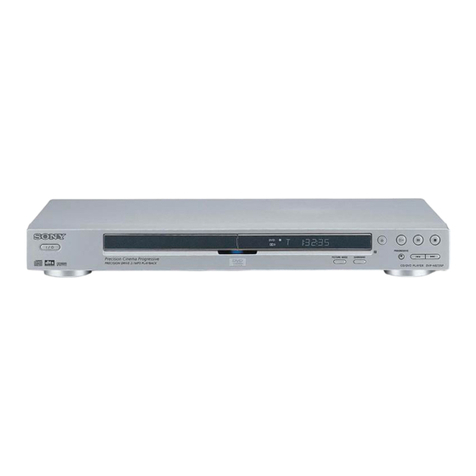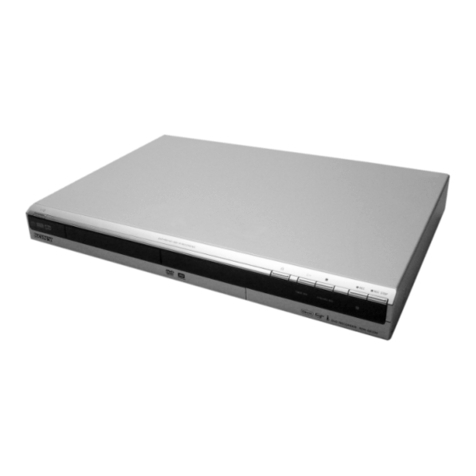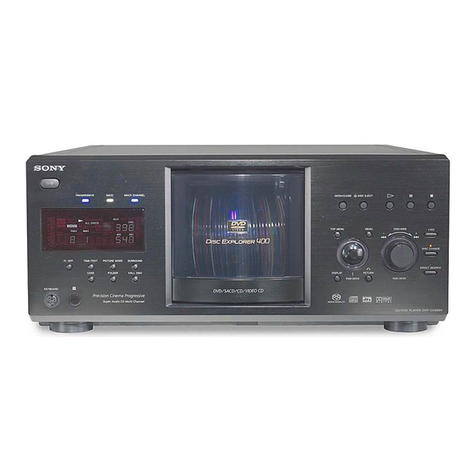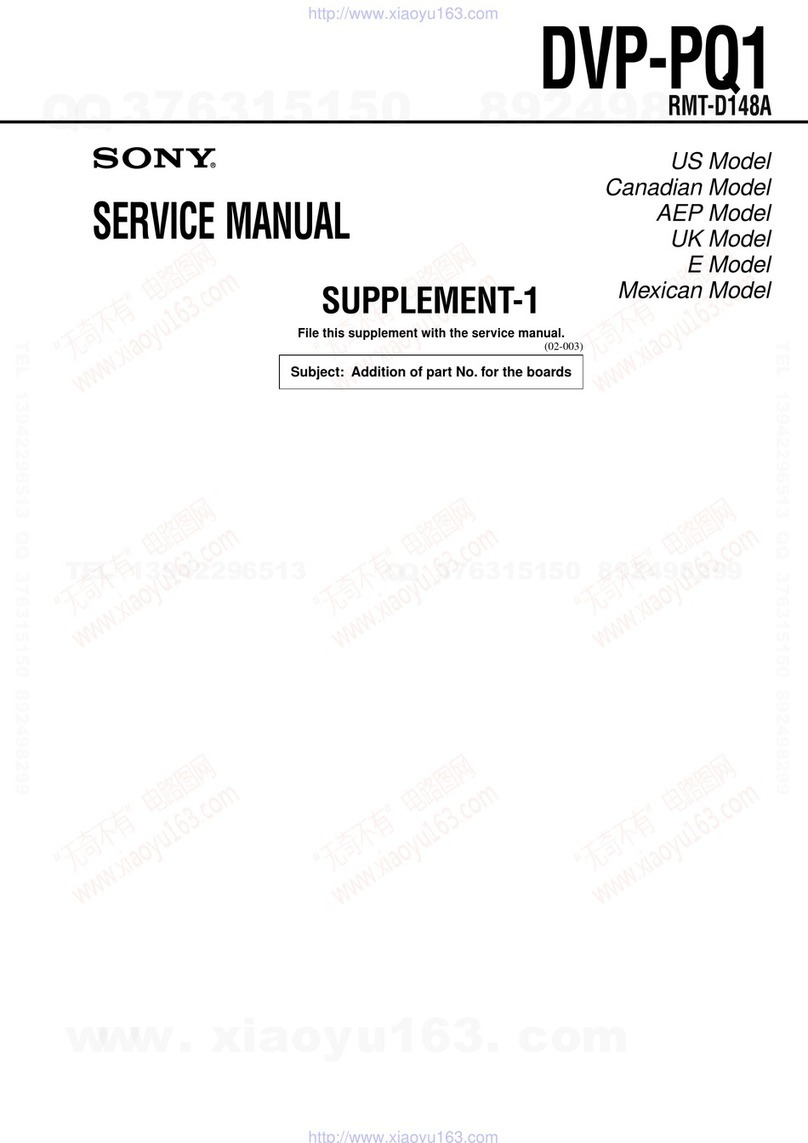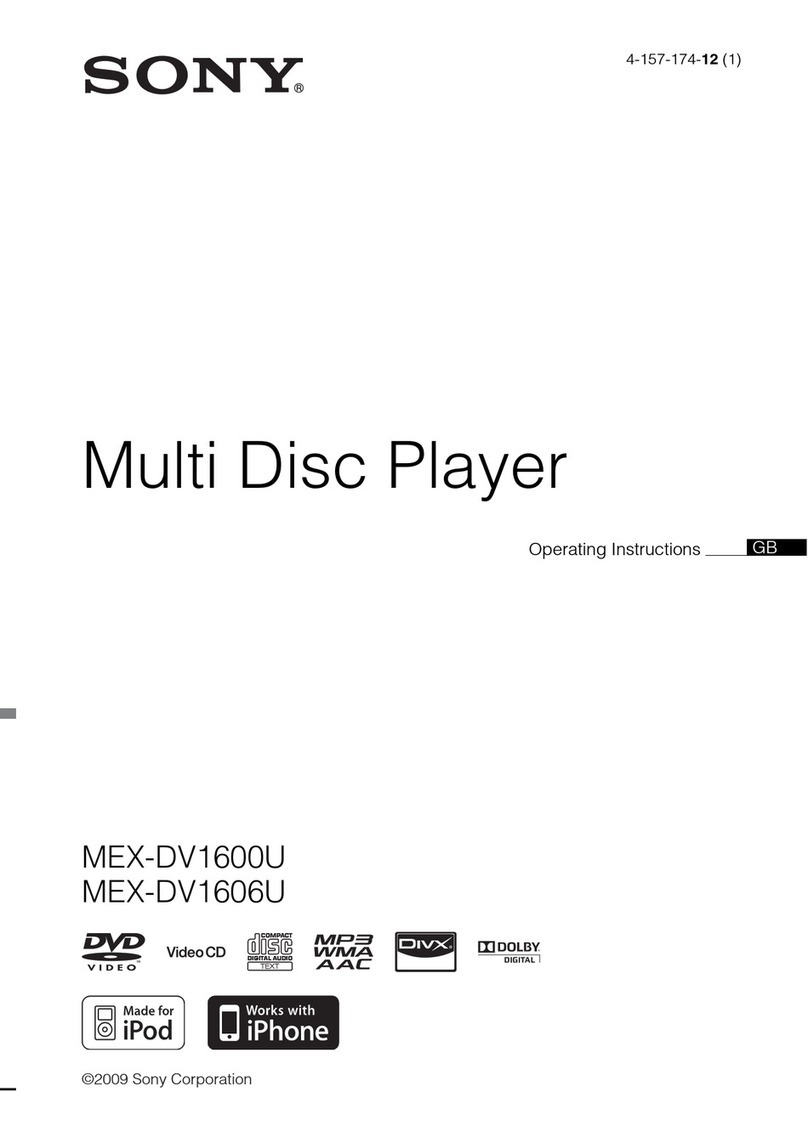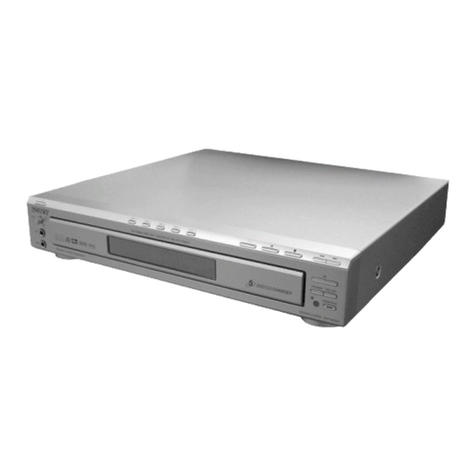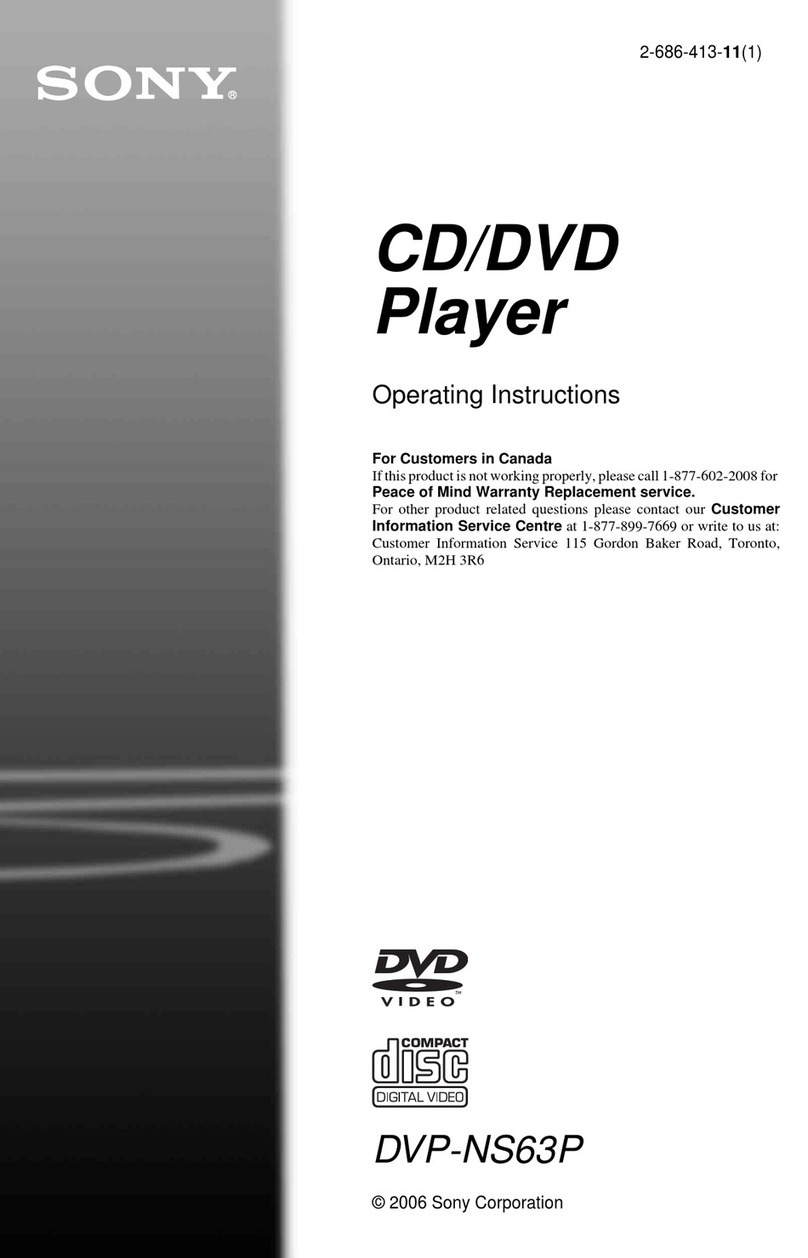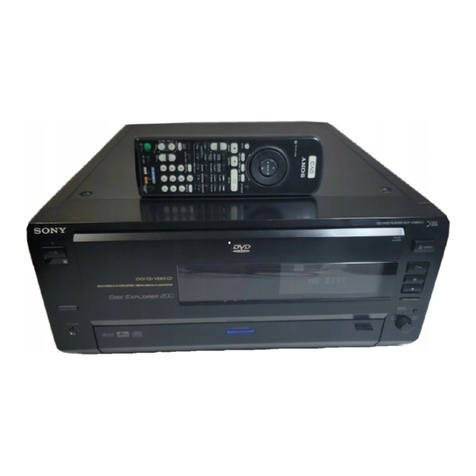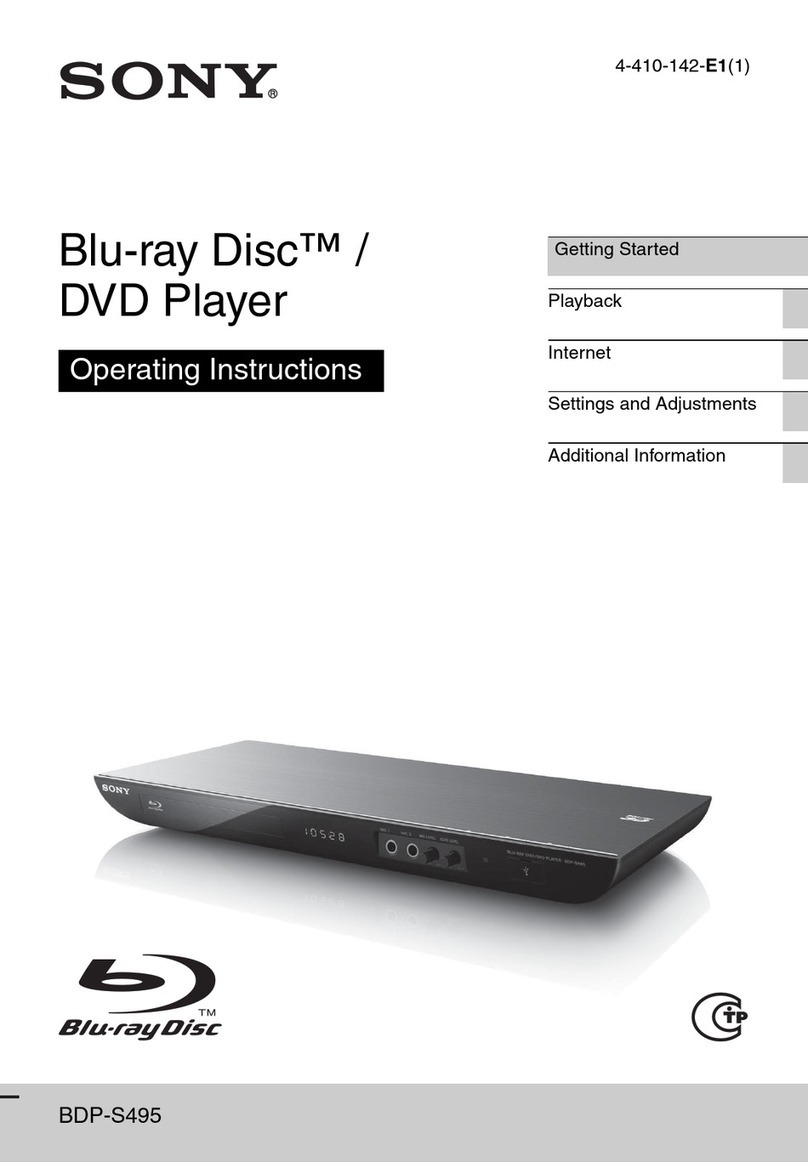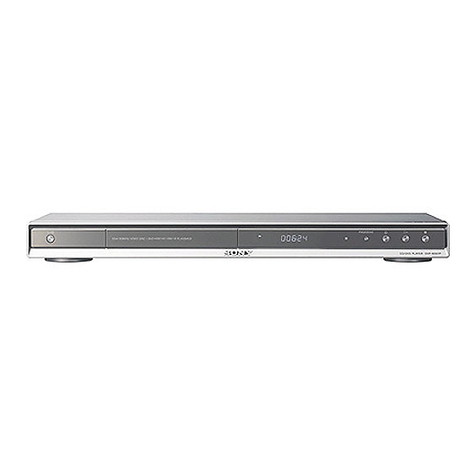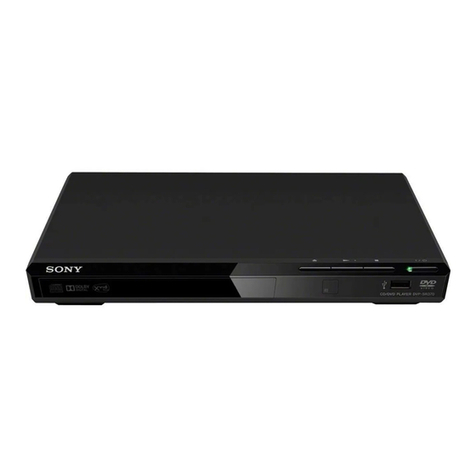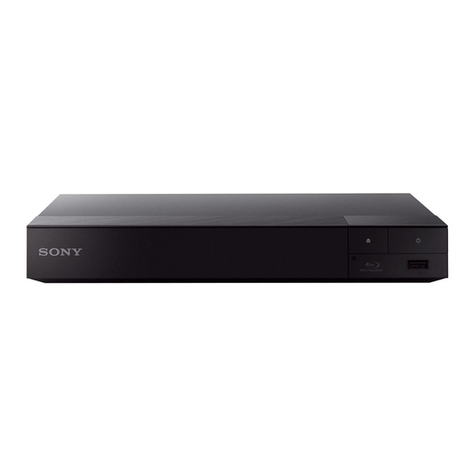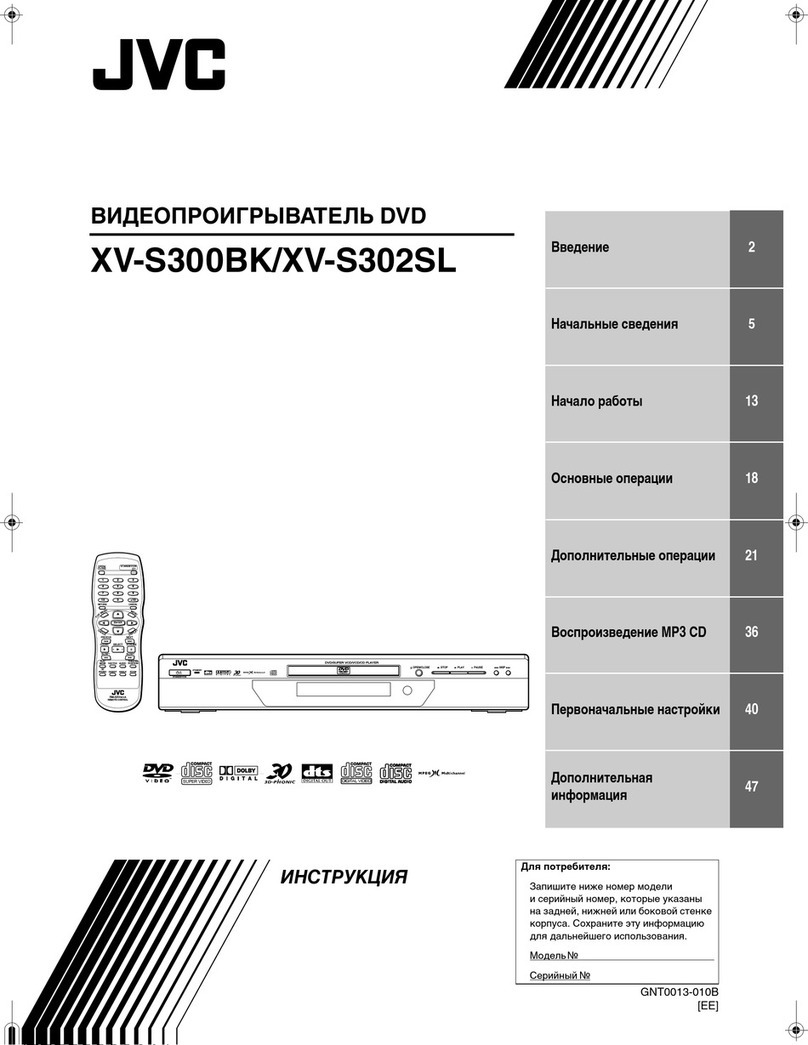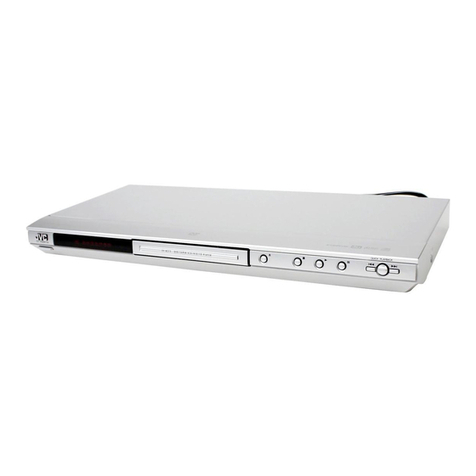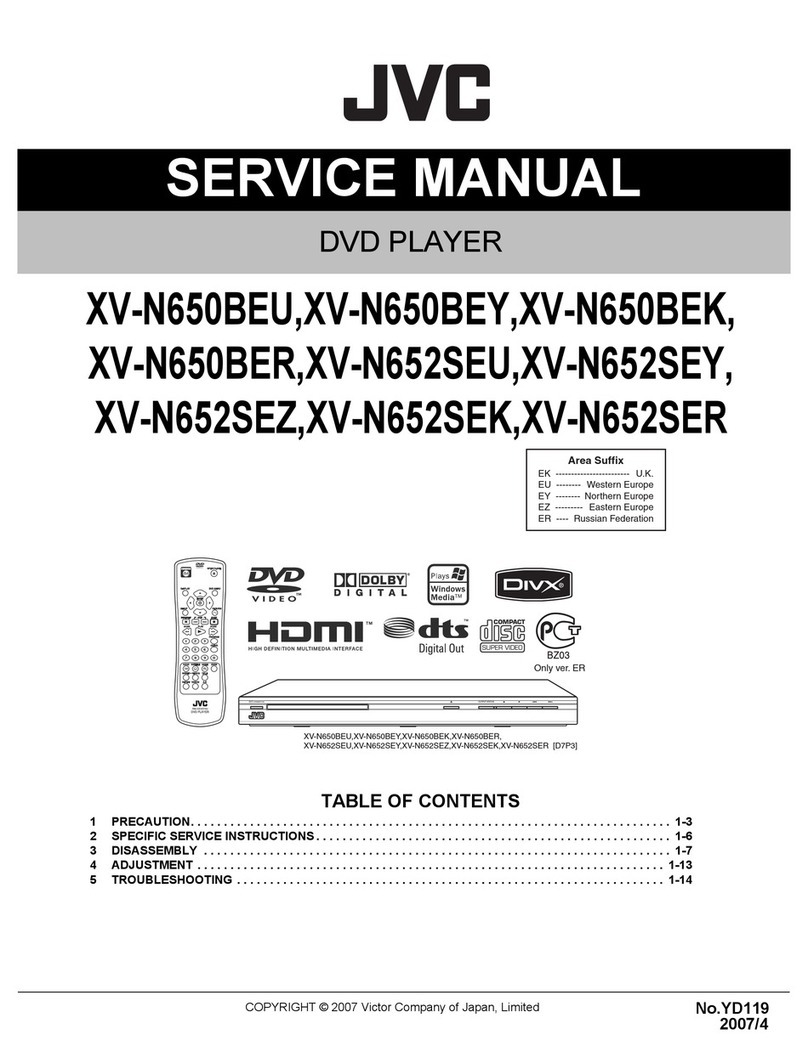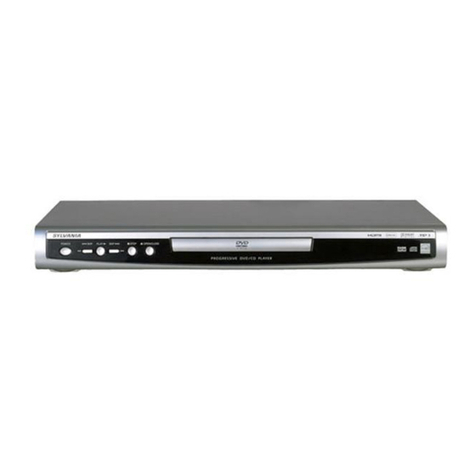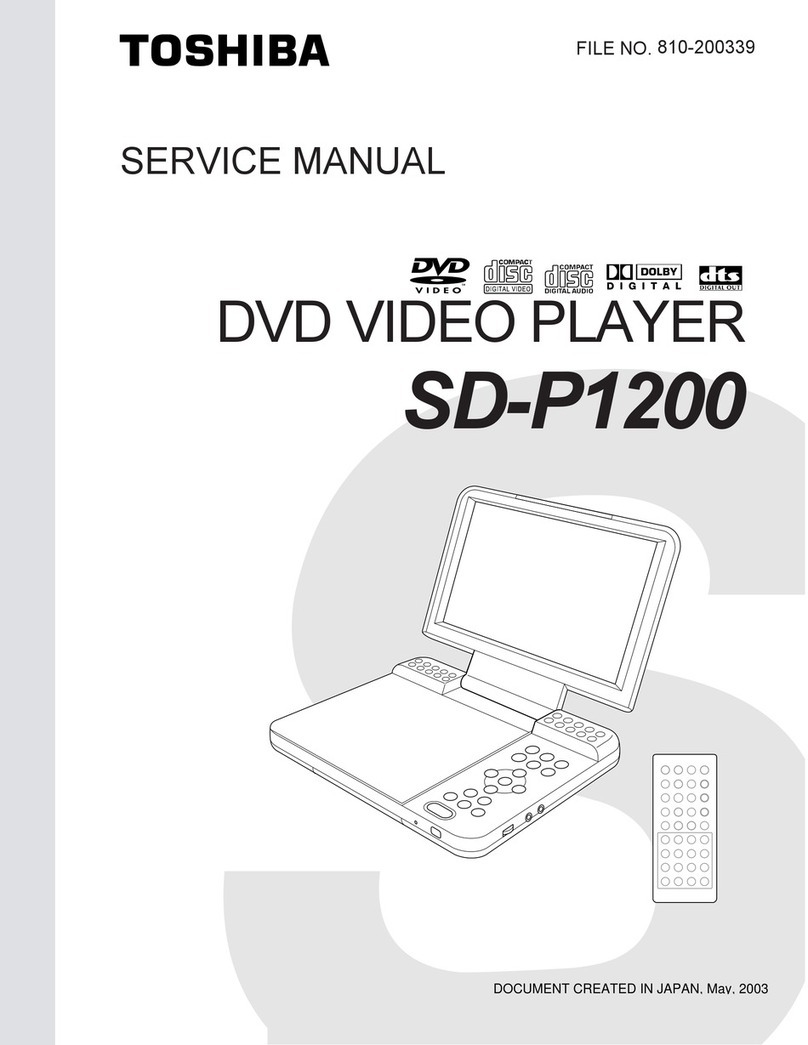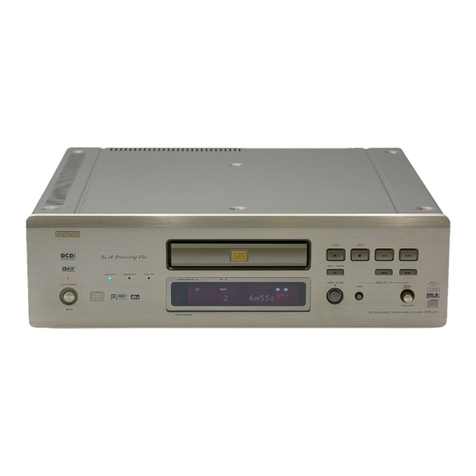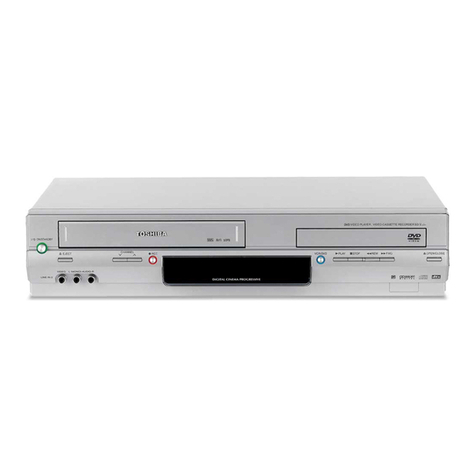
2
HCD-WZ88D
UNLEADED SOLDER
Boards requiring use of unleaded solder are printed with the lead-
free mark (LF) indicating the solder contains no lead.
(Caution: Some printed circuit boards may not come printed with
the lead free mark due to their particular size)
: LEAD FREE MARK
Unleaded solder has the following characteristics.
•Unleaded solder melts at a temperature about 40 °C higher
than ordinary solder.
Ordinary soldering irons can be used but the iron tip has to be
applied to the solder joint for a slightly longer time.
Soldering irons using a temperature regulator should be set to
about 350 °C.
Caution: The printed pattern (copper foil) may peel away if
the heated tip is applied for too long, so be careful!
•Strong viscosity
Unleaded solder is more viscou-s (sticky, less prone to flow)
than ordinary solder so use caution not to let solder bridges
occur such as on IC pins, etc.
•Usable with ordinary solder
It is best to use only unleaded solder but unleaded solder may
also be added to ordinary solder.
SAFETY-RELATED COMPONENT WARNING!!
COMPONENTS IDENTIFIED BY MARK 0OR DOTTED LINE
WITH MARK 0ON THE SCHEMATIC DIAGRAMS AND IN
THE PARTS LIST ARE CRITICAL TO SAFE OPERATION.
REPLACE THESE COMPONENTS WITH SONY PARTS WHOSE
PART NUMBERS APPEAR AS SHOWN IN THIS MANUAL OR
IN SUPPLEMENTS PUBLISHED BY SONY.
TABLE OF CONTENTS
1. SERVICING NOTES ................................................ 3
2. GENERAL ................................................................... 6
3. DISASSEMBLY
3-2. Case ................................................................................. 10
3-3. Front Panel Assy.............................................................. 10
3-4. VR Board, FL Board, FUNCTION SW Board ............... 11
3-5. 4CH-VOL Board, VIDEO Board .................................... 11
3-6. MAIN Board, REGULATOR Board, MIC Board........... 12
3-7. DVD Mechanism (CDM85-DVBU102).......................... 12
3-8. DMB10 Board ................................................................. 13
3-9 Tray.................................................................................. 13
3-10. MS-203 Board ................................................................. 14
3-11. Base Unit ......................................................................... 15
3-12 Optical Pick-up (KHM-310CAA/C2NP) ........................ 15
4. TEST MODE ............................................................... 16
5. DIAGRAMS
5-1. Block Diagrams – RF/SERVO Section – ....................... 22
– VIDEO Section – .......................................................... 23
– AUDIO Section –.......................................................... 24
– MAIN Section – ........................................................... 25
5-2. Printed Wiring Board – DMB10 Section (SideA) – ....... 26
5-3. Printed Wiring Board – DMB10 Section (Side B) – ....... 27
5-4. Schematic Diagram – DMB10 Section (1/4) – .............. 28
5-5. Schematic Diagram – DMB10 Section (2/4) – .............. 29
5-6. Schematic Diagram – DMB10 Section (3/4) – .............. 30
5-7. Schematic Diagram – DMB10 Section (4/4) – .............. 31
5-8. Printed Wiring Board – MAIN Section – ........................ 32
5-9. Schematic Diagram – MAIN Section (1/2) – ................. 33
5-10. Schematic Diagram – MAIN Section (2/2) – ................. 34
5-11. Printed Wiring Boards – FL/FUNCTION SW Section – 35
5-12. Schematic Diagram – FL/FUNCTION SW Section – .. 36
5-13. Printed Wiring Board – REGULATOR Section – ........... 37
5-14. Schematic Diagram – REGULATOR Section –............. 38
5-15. Printed Wiring Board – 4-CH-VOL Section – ................ 39
5-16. Schematic Diagram – 4-CH-VOL Section – .................. 40
5-17. Printed Wiring Boards
– VIDEO/MIC/VR/MS-203 Section – ............................ 41
5-18. Schematic Diagram
– VIDEO/MIC/VR/MS-203 Section – ............................ 42
6. EXPLODEDVIEWS
6-1. Front Panel Section ......................................................... 54
6-2. Chassis Section................................................................ 55
6-3. Dvd Mechanism Section (CDM85B-DVBU102)............ 56
7. ELECTRICAL PARTS LIST .................................. 58
Notes on chip component replacement
•Never reuse a disconnected chip component.
•Notice that the minus side of a tantalum capacitor may be
damaged by heat.
Flexible Circuit Board Repairing
•Keep the temperature of the soldering iron around 270 °C
during repairing.
•Do not touch the soldering iron on the same conductor of the
circuit board (within 3 times).
•Be careful not to apply force on the conductor when soldering
or unsoldering.

